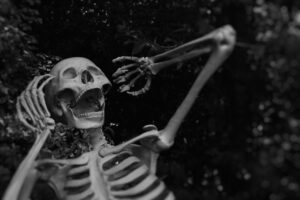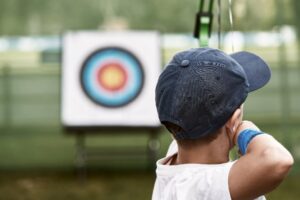10 Years In Barefoot Shoes
What I've Learnt
Back in 2012, I picked up Born to Run by Christopher McDougall, not realizing it would change the way I thought about shoes—and my own feet—forever.
The book was filled with fascinating stories, but one idea stuck with me: our ancestors ran for miles—sometimes days—to tire out their prey.
No fancy running shoes, no built-in arch support—just strong, capable feet. It was a revelation: we are born to run.
Not only that, but the narrow, cushioned shoes I had always worn—especially ones with a raised heel—were actually weakening my feet.
Then I looked down. Maybe for the first time, I really saw my feet.
My right big toe had started turning in, forming a bunion.
Q: How had I never noticed that before?
A: I had barely paid attention to my feet at all.
At the time, I was wearing custom orthotics to help with foot and knee pain. Inspired by the book, I took off my shoes and went for a short barefoot run on the grass.
That first run felt incredible—until it didn’t.
By the end, my feet hurt. I had jumped in too fast. My feet were no longer used to moving the way they were designed to. I needed to ease into it, gradually rebuilding their strength.
That’s when I discovered barefoot shoes. Unlike conventional footwear, barefoot shoes are designed to mimic the natural shape and movement of the foot. They have a wide toe box, a thin, flexible sole, and zero heel lift, allowing for better ground feel and natural foot mechanics.
For over a decade now, I’ve worn mostly barefoot-style shoes—shoes that let my toes spread naturally, with no artificial heel lift (“zero-drop”).
I even found dress shoes that fit the bill for work and looked good too.
The funny thing? I’ve always loved shoes
I still have a collection of beautiful shoes (see below)—some I rarely wear but still love to own!
Can you make out which ones above are barefoot shoes?
Over time, my feet got wider, stronger, and more mobile. Now, they look strong, more muscular, and my entire body feels the difference.
My progress wasn’t a straight line. Along the way, I had to make adjustments and figure out what worked for me.
I walk and workout in barefoot shoes but I wear custom orthotics while playing tennis.
And even as my body prefers the barefoot feel, I occasionally allow myself to slip on a pair of conventional dress shoes or sneakers.
I’ll be sharing more about my journey — what worked, what didn’t, and the surprising benefits I’ve discovered along the way.
If you’ve ever wondered whether barefoot shoes make a difference, stay tuned.
Disclaimer: This is my personal experience with barefoot shoes over the past decade. Everyone’s feet and bodies are different, and what worked for me may not work for you. I am not a doctor or medical professional. If you’re considering switching to barefoot footwear and have doubts about whether it’s right for you, consult a healthcare professional.






Leave a Reply
Your email is safe with us.